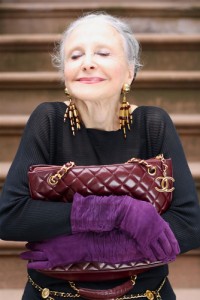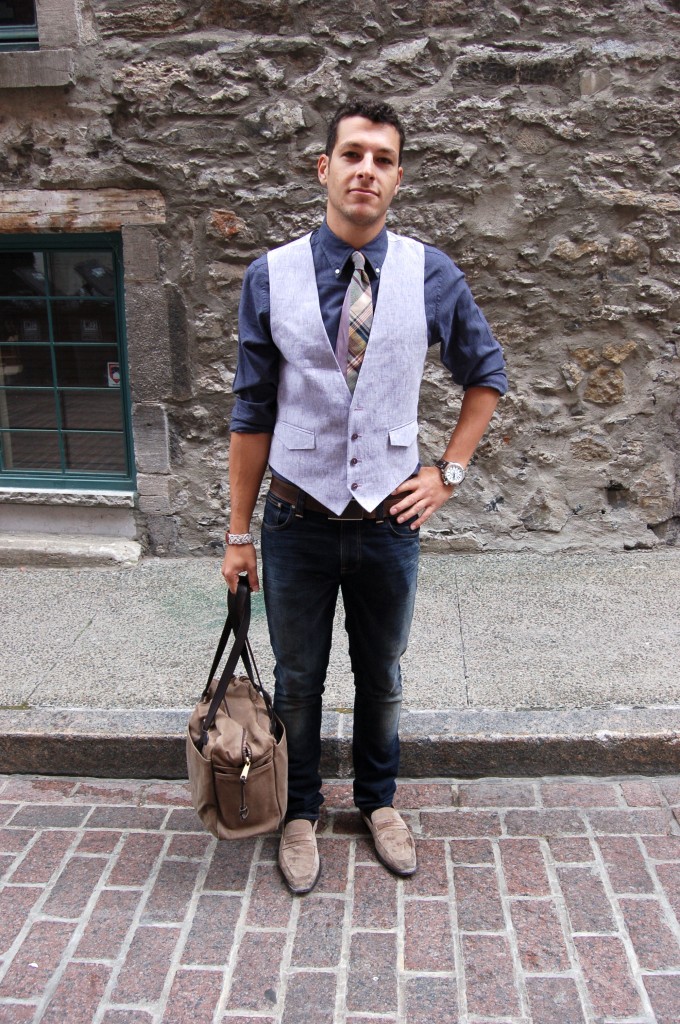***Images from PowerHouse books.
These days, women 70 and older are expanding our gaze to appreciate one of the most often forgotten forms of physical beauty: old age.
That’s right: Our obsession with youth and smooth skin has just been given a wrinkle that may never be Botoxed. A stunning book called Advanced Style (PowerHouse Books, $40) by street style photographer Ari Seth Cohen released this month captures New York City’s most elegant grandes dames. They sport glamorous hats, gold drop earrings, oversized glasses and colourful vintage scarves. Many are regulars on Cohen’s popular blog (advancedstyle.blogspot.ca), on which the book is based. There is also a third prong to the project, a documentary, which will be released this summer.
“I’ve always been interested in style and fashion, and I thought it would be a great way for people to have an inspiring image of what it is to grow older,” Cohen, 30, said of the project, which he started four years ago as an homage to both his grandmothers.
The book’s cover art features the glorious Gitte Lee, a former model revived in an Italian Vogue 2010 editorial.
A few pages later, there is the simply named Rose, wearing a purpled print kimono dress. At 100 years old, she insists no outfit is complete without an eye-catching belt or elegant strand of beads.
Marc Jacobs was so inspired by Cohen’s blog, he based his Fall 2012 collection on it, the designer revealed to WWD and the New York Times.
“I hope I’m like this when I’m older,” Kim Kardashian tweeted upon viewing the YouTube trailer to the Advanced Style documentary, a playful four-minute clip featuring mega-stylish seniors praising colour, leopard print and larger-than-life accessories.
To them, fashion is a vibrant form of self-expression and an unrelenting source of creative freedom.
“I get emails from younger women all the time saying, ‘I can’t wait to get older’ – that’s the most amazing thing to me,” Cohen said. To him, Advanced Style was always about more than capturing golden- and platinum-age fashion: It was about showing how his muses are advanced in many aspect of life. “Style is a reflection of their vitality and spirit,” he said. Many of his subjects experience daily pains and have suffered through tragedy, but they still enjoy their lives brilliantly. Fashion is simply one of those ways.
Cohen adds quotes to the photos in the book, and posts videos of seniors on his blog, where their personalities come through, and are ultimately where Cohen’s project really hooks you.
“I’m old and nobody has to like (what I’m wearing) as far as fashion is concerned,” says Ilona Royce Smithkin, a 92-year old artist-turned-cabaret performer (who still performs), in a video.
With bright orange hair and long matching eyelashes, Smithkin is one of Cohen’s more eccentric dressers and wittiest personalities. “As long as I look in the mirror and (see) – AH! – this is me,” she says, everything is all right. A Q&A with burlesque star Dita Von Teese and Smithkin is printed at the end of the book.
Once entrenched in Cohen’s old-timey world, and peering through his rectangular looking glass – whether in blog, book or video form – one’s eyes are changed for good. Even Beatrix Ost who wears a vibrant emerald turban (for fashion, not religion) with a matching flower appliqué suddenly doesn’t seem, well, so kooky anymore. Rather, personal style becomes an invitation into someone’s autobiography.
Style strata
Since most advanced-style women shop within their own closet, Cohen says, their wardrobe not only reflects their personal style, but also the era they come from.
“Women in their 80s, 90s, and 100s dress very differently from women in their 60s and 70s,” he points out. “This sense of elegance of grace, and putting on hats and gloves, is definitely more alive in the older, older women.” During the Depression, he says, style was ultimately a sign of dignity and not giving up. This mentality continued in later life.
Meanwhile, women in their 60s and 70s “went through feminism, and they were influenced by hippie culture,” he said. As a result, some wardrobes tend to have ethnic and even punk influences.
Seventy-four year old Montreal model and actress Francine Lacroix still has a talent agent: Sybille Sasse, one of the few who will represent models 60 and older. Lacroix has fond early memories of fashion. She is also amazed about how much has changed over the years.
“My fun growing up was looking at my mom before she went out at night,” Lacroix said staring off wistfully. “I thought she was beautiful, and she was.” Her father owned well-known furrier J.K. Walkden on Sherbrooke St. downtown, and she can remember the pair heading off to the opening of the Queen Elizabeth (1958), the opening of Places des Arts (1963), and, and then to Expo 67. Her mother often wore custom garments by Leo Chevalier, Marie-Paule Nolin and Michel Robichaud.
As her everyday dress code, her mother used to wear a tweed skirt, a cashmere sweater and pearls. But only a generation apart, and outliving her mother by a number of years, Lacroix says she is deeply influenced by casual dressing. She wears Hue jeggings to the mall.
“There were all kinds of balls with the long white gloves,” she recalls of her own glamorous past spent with her late husband, who worked in advertising. Yet today, for openings at the Musée des Beaux Arts, or at La Maison Symphonique, which she still attends, Lacroix dons a nice slacks suit and cape. Because of arthritis, she says she avoids heels (“I wish I still could!”), and says that pants look better than skirts and dresses with the sensible footwear. Rarely does any event she attend require greater formality than a pantsuit.
Lacroix acknowledges that many Montrealers still live glamorous lives but there is a certain formality that is gone. For instance, people here once danced and dined at the piano bar, which has been uprooted by loud, casual restaurants. New York women, like the ones Cohen photographs, are the rare few who can still enjoy that element of life.
“We hope elegance lasts,” she says, noting how daughters used to copy her mothers’ fashions and now it’s the daughters who tell the mommies what to wear. Today, Lacroix also tries to mix and match like young women do. She’ll toss together a blazer, a pair of pants with Hermès jewels and scarves she collected on exotic trips with her husband. “I think it’s so much fun,” she says of the approach, even though she grew up wearing matching skirt suits, and regards formal style with nostalgia. But however casual Lacroix deems herself to be, her style, her jewels, and her radiant complexion (she swears by Lancôme beauty products) tells of her glamorous past.
Facts of life
Living to a certain age, where arthritis becomes a problem for the feet, and buttons become a challenge for the hands, there are certain wardrobe tricks many seniors turn to. Namely, elastic waistband pants, slipover tops, shirts with Velcro, long sleeves and mock turtlenecks. Clothes tend to be less clingy, too. But true advanced-style women, such as the ones selected by Cohen, tend to gravitate toward fine fabrics regardless of physical constraints. They’re also masters at making a stylish impact with bold palettes and accessories.
Cohen’s Valerie (part of the Jean and Valerie fashion duo) may wear head-to-toe leopard print; Mary says “sunglasses are better than a facelift”; Joyce wears gold chandelier earrings and carries Chanel bags; and elegant 80-year-old former dancer Jacquie Tajah Murdoch wears a long black dress, an oversized hat and boasts sharp red painted nails. But in general, there is a formula, Cohen says. “They love accessories and tend to be very good with colour, which helps them feel ‘less invisible,’ ” he says. But their biggest trick, he says, is knowing what they are comfortable wearing.
The hats, the gloves, the confidence, the glamour – there are many reasons why Cohen’s muses and senior style in general seem to be impressing upon younger generations. And while senior fashion fever may not have picked up much beyond Vogue’s annual Age Issue just yet, trendsetters sure seem to be paying attention.
To get a taste of Cohen’s Advanced Style documentary: visit youtube.com and enter the keywords: advanced style film trailer.

